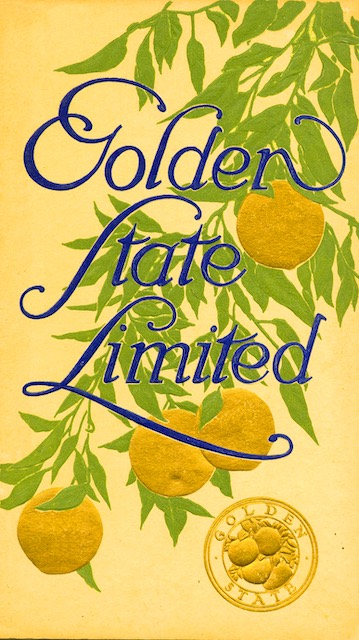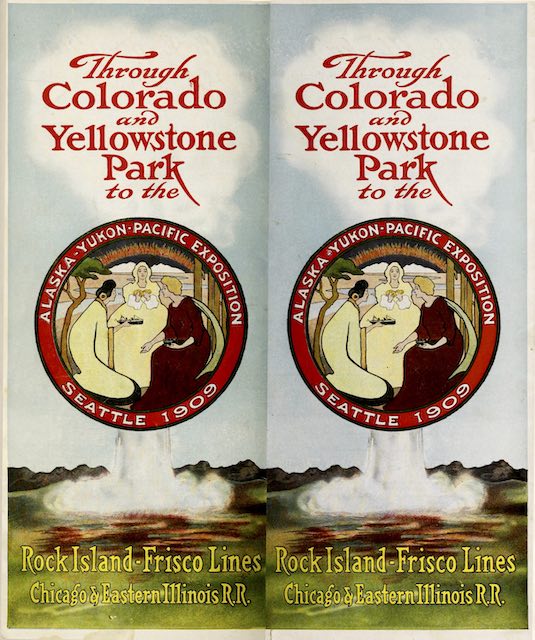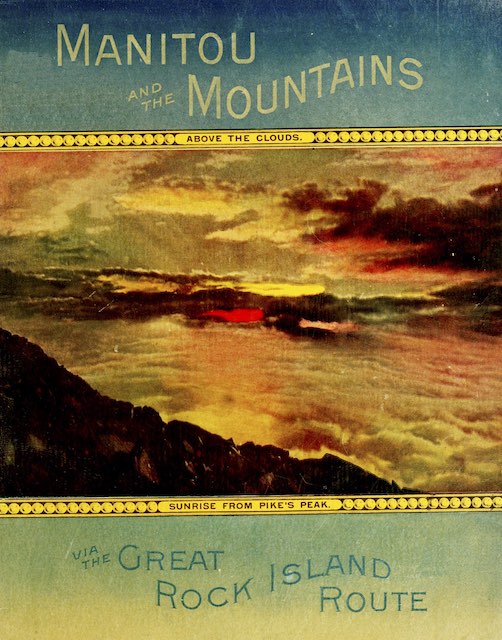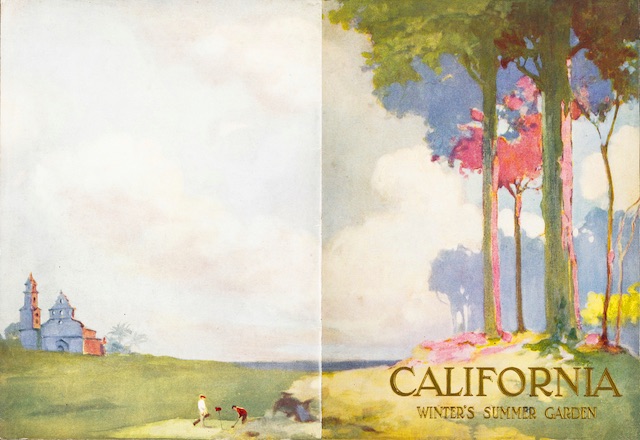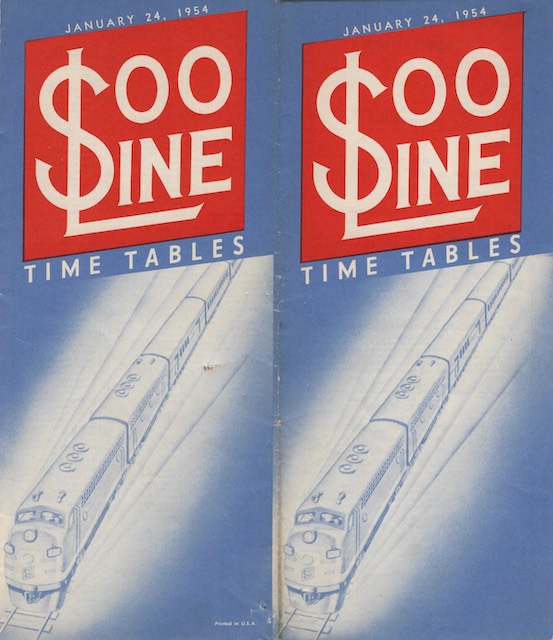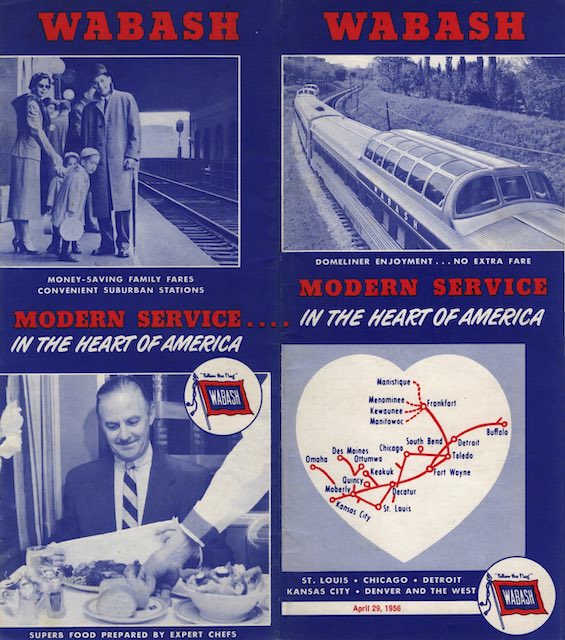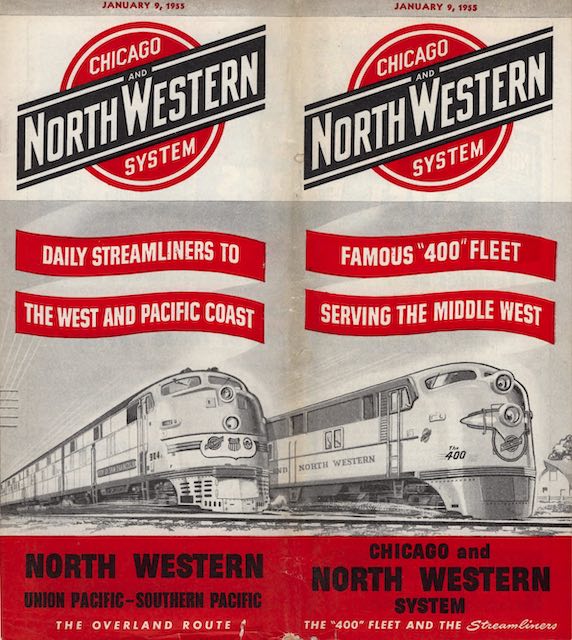We’ve previously seen a 1937 Rock Island booklet that was printed in rather gloomy blue and black ink. This one from 1940 is brightened up with some red highlights. While the cover shown below (which is the back cover) tints the sky, one of the horses, saddles, and distant roofs in red, red is used on other pages in the booklet only in a few circles, geographic shapes, and on one page lines on a map.
 Click image to download an 15.0-MB PDF of this 16-page booklet.
Click image to download an 15.0-MB PDF of this 16-page booklet.
Both booklets ask “the all-important question,” which was “where shall we go this summer?” The answer, which of course was supposed to be Colorado, was told in text and photos that for the most part were practically identical in the two booklets. Continue reading


